A short, slow drive confirms the quality of the latest Prius but new tech will be missing from versions arriving here.
When you travel 15,000km for a car launch, you'd ideally like to spend more than 4km behind the wheel. Sadly that's what we got at the first official media drive of the new Toyota Prius, the world's best-selling hybrid.
As is often the way in Japan, every second of our time with the Prius was carefully choreographed by the head office PR machine.
Even the tiny bumps on the billiard-table smooth test track at Japan's Mount Fuji raceway were man-made, while our pace car driver ensured we wouldn't drive faster than 40km/h through corners. It was a strange approach given the earlier media briefing had focused on how the new car was more fun to drive.
Despite all the unwanted attention, we gleaned a few impressions, helped by the fact we were allowed a brief drive of the current generation car before the new one.
The good news is the new Prius is better. The bad news is it hasn't changed as much as many Australian buyers would like.
First, the good news. The next-generation Prius is quieter and better to drive, with a much more attractive cabin. And Toyota is predicting it will be 18 per cent more efficient than the current model.
The bad news is Australian buyers won't get the more advanced lithium-ion battery pack available to Japanese and US customers. Toyota Australia says the company will stick with old-tech nickel metal hydride batteries here because of "availability" issues.
But a Toyota engineer at the Prius test drive says the lithium-ion batteries have been allocated to markets where fuel economy is a priority. And that's not Australia apparently. The company is coy about whether the lithium-ion powered Priuses will be more fuel efficient than the nickel metal hydride batteries. However, it confirms the lithium pack is smaller and roughly 15kg lighter, suggesting there may be a difference.
The capacity is now more than some mid-sizers at 501L
Toyota won't confirm the official fuel consumption but says the target is 40km a litre on the Japanese cycle, up from 32.6km. Based on those figures, the Australian version would use 3.2L/100km, down from 3.9L.
The maker says the only difference between the two battery packs is size; output's the same. However, experts say lithium ion batteries last longer and charge and discharge faster. More importantly, competitors are increasingly offering a lithium-ion alternative.
Nickel batteries are cheaper to make, though, so there is less likelihood of a price rise when the car is launched in February.
The nickel battery isn't the same as the existing one. It is now 10 per cent smaller and Toyota says its charging performance has increased by 28 per cent. Both the petrol engine and the electric motor are significantly less powerful than the previous model. The petrol engine output drops to 72kW from 100kW and the electric motor is down from 73kW to 53kW.
The smaller battery has allowed Toyota engineers to shift it forward, adding another 56 litres of luggage space to the boot. The capacity is now more than some mid-sizers at 501L.
Toyota says the better economy comes mainly from improving the thermal efficiency of the petrol engine. It says it has reduced friction and improved combustion and cooling.
In Japan, the new model will also get Toyota's latest driver assistance technology, which includes automated low-speed braking with pedestrian detection, lane departure warning, radar cruise control and high beams that dip automatically. Toyota Australia won't say if all or some of the technology will be available on local models, but says the car will get a blind spot monitor and rear cross-traffic alert.
Driving
It may only have lasted eight kilometres but our back-to-back test was surprisingly instructive.
The new Prius cabin looks more up-market, with "piano white" surfaces and blue instrumentation giving it a space-age feel. Gone is the floating centre console and the speedo in front of the driver. Toyota has moved the instrument panel to the dash centre and the roof's high point has come forward, liberating more front head room. There are Prius logos in the aircon vents and the leather seats, with blue stitching, feel high quality. Rear legroom remains on par with some mid-sized sedans.
The car has been lowered by 20mm and Toyota says the lower centre of gravity and a 60 per cent stiffer body structure allow the car to sit flatter through corners and pitch less under braking and accelerating.
A quick dash through some witch's hats at lower speeds was enough to confirm less lean through corners and better grip, while the steering feels more direct and accurate than the old model. It felt more composed over the (man-made) bumps.
Despite the power reduction, the new Prius also feels more responsive off the mark, while engine noise is better quelled, thanks to more absorption materials in the engine bay and better sealing around the windows and doors.
Toyota Prius 2016: Hybrid
| Engine Type | Inline 4, 1.8L |
|---|---|
| Fuel Type | Premium Unleaded/Electric |
| Fuel Efficiency | 3.9L/100km (combined) |
| Seating | 5 |
| Price From | $12,100 - $16,170 |
| Safety Rating |
|
Verdict
It's impossible to give a definitive verdict after such a short drive at low speeds.
On the surface the new Prius feels more refined and composed, but we will reserve judgment until the local launch.
The failure to adopt more modern technology may cause prospective Prius buyers in Australia to make a judgment even before it gets here.
Does the new Prius bring enough tech to deserve your hard-earned? Tell us what you think in the comments below.
Range and Specs
| Vehicle | Specs | Price* |
|---|---|---|
| Hybrid | 1.8L, Premium Unleaded/Electric, SPEED CONTINUOUS VARIABLE | $12,100 - $16,170 |
| i-Tech Hybrid | 1.8L, Premium Unleaded/Electric, SPEED CONTINUOUS VARIABLE | $14,850 - $19,470 |






.jpg)
.jpg)
.jpg)
.jpg)
.jpg)
.jpg)
.jpg)
.jpg)



.jpg)


















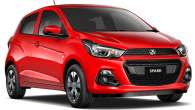
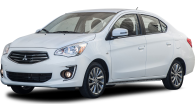






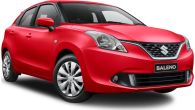





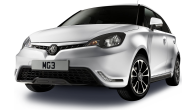

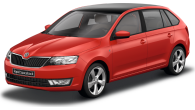
.jpg)



.jpg)
